Swing into Spring: A Nature-Based Spring Scavenger Hunt
April 28, 2022
Often branded as the “season of change,” spring is well-established as a time of birth and arrival in nature. More than just the harbinger of sneezes or the bringer of pollen, this season releases us from winter’s frigid grasp and welcomes a period where growth and newness abounds. While anyone can identify spring’s presence from its basic markers, such as warmer temperatures or budding trees, the intricacies of various animal migrations and hibernations to plant blooms are seldom explored. Many of these are heralds of spring, while others are indicators of spring at its best, and marvelously, hundreds of examples can be found in Hastings. This “scavenger hunt” of sorts highlights a small arrangement of our flora and fauna that embody spring and gives you the tools to find and identify them. Good luck!
Birds
Eastern Phoebe (Sayornis phoebe) — A small flycatcher about half the size of a robin, the Eastern Phoebe has a brown back and yellowish-white stomach. Eastern Phoebes are often seen perched near water bodies and intermittently flycatching (acrobatic flights) for insects, but they can also be found in open fields with conspicuous perches or in dense forests. Phoebes, which constantly tail-flick while perched, are one of our earliest migratory songbirds, often showing up in early March to stake out their territory. To see this species in Hastings, one’s best bet is Sugar Pond in Hillside Woods, though the entirety of the Woods can be very fruitful for this species. Soon after the sun has crested over the forest to the East of Hillside, Eastern Phoebes can be energetically sallying above the pond in hopes of grabbing a bite to eat.
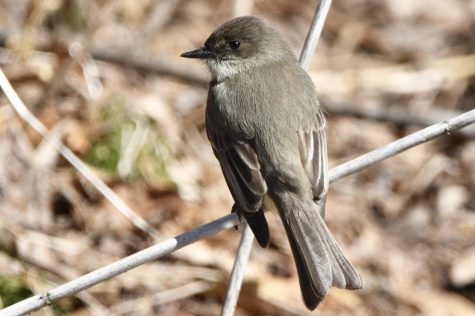
Double-crested Cormorant (Phalacrocorax auritus) — A large water bird seen on both fresh- and saltwater, the Double-crested Cormorant is appears to have black plumage, but when hit by the sun at the right angle, their feathers show an iridescent blue-green shimmer. Adult birds have a bright orange beak, brilliant aquamarine eyes, and extended eyelashes that create their namesake “crests.” In exchange for underwater speed to better hunt fish, Double-crested Cormorants have evolved to lack waterproof feathering, and as a result, they are easy to spot while they spread their wings in the sun to dry. Cormorants are strictly found in areas with fair-sized water bodies, meaning that the only opportunity to see this species in Hastings is along the Hudson. Thankfully, the wooden pilings at MacEachron Waterfront Park (the Hastings Waterfront) tend to be one of the best congregation sites for this species along the Southern Hudson.
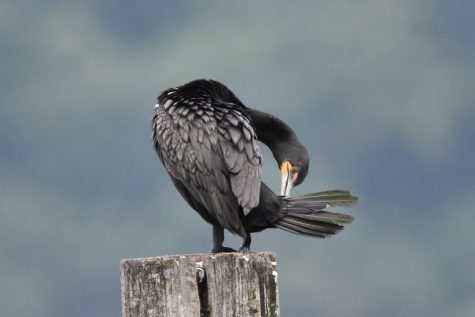
Osprey (Pandion haliaetus) — Osprey are a massive raptor found near water bodies and can be identified by their dark brown backs, pale undersides, alternating swaths of brown and white on their head, and tendency to dive into the water in pursuit of fish. With a wingspan of nearly six feet, Osprey strictly eat fish and are almost always seen soaring high above the water in search of prey. This species is well-adapted to hunt fish, having eyes that neutralize glare on the water and textured feet to better grasp scales, and therefore are only present between March and November, when the water remains unfrozen. Both the Hudson River (viewed from anywhere) and Hillside Woods are excellent spots to see Osprey, and one’s chances are better in the early morning or late afternoon, though Osprey are active all day. Since Osprey will often soar along the thermal winds as the day heats up, one can also see this species from random locations such as Reynolds Field, the Burke Estate, or even their home.

Plants
Lynwood Gold Forsythia (Forsythia x intermedia) — A superbly bright and colorful plant, Lynwood Gold Forsythia is a hybridized plant from two species of forsythia. While an invasive species, Lynwood Gold Forsythia is well-established in our region as a common backyard shrub due to its hundreds of stunning yellow flowers that bloom in early spring, followed by the dense, green foliage that provides privacy throughout summer. One of our earliest blooming flowers, Lynwood Gold Forsythia often come out in mid-to-late March but are mostly gone before May. A fairly easy plant to find, Forsythia can be seen on likely any road in Hastings, with plenty of Forsythia on roads like Calumet, Chauncy, or Rosedale.
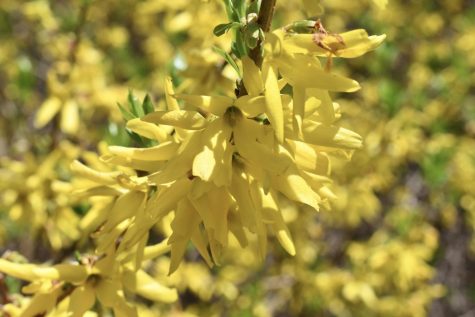
Red Maple (Acer rubrum) — Red Maples are native trees to the Northeast and a well-named species: they show flower-esque, red buds in spring, making them appear solidly red from a distance; in fall, all their leaves turn solidly red. Due to their attractive nature, Red Maples are one of the few native trees that people decoratively plant in their yard; away from homes, this species is frequently found in any native forest. Hillside Woods is a great spot to find Red Maples, especially in wetter areas like Sugar Pond or Three island Pond. Additionally, many obvious Red Maple stands in front of Hillside Elementary School!
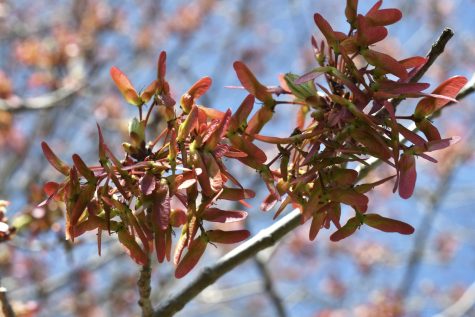
Mammals
Groundhog (Marmota monax) — Groundhogs, also known as woodchucks, are an all-brown, short haired member of the rodent family. With small ears and a squat body, groundhogs are strictly ground-dwelling species, never found too far from their underground burrows. Groundhogs are fairly easy to identify but can only be seen after their hibernation, which lasts from sometime between late October and early March. Although a difficult species to find in Hastings, Hillside Woods can sometimes harbor groundhogs. Other possible locations include the Burke Estate and Zinsser. While not in Hastings, Mercy College’s sports field is a near-guaranteed spot to see Groundhogs.
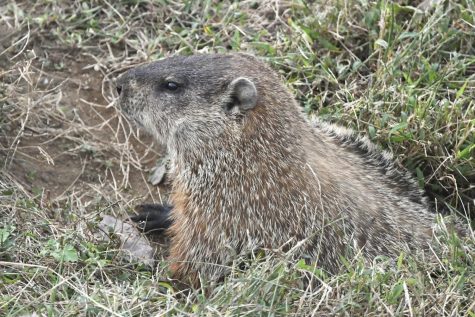
Reptiles
Eastern Garter Snake (Thamnophis sirtalis sirtalis) — A small, dark-bodied snake with pale, yellow stripes, the Eastern Garter Snake is an extremely abundant, non-venomous snake found across the US Northeast. Eastern Garter Snakes hibernate between October through mid-March, much like Groundhogs, but once the weather is warm enough, they can easily be seen basking on rocks for warmth or hunting for small rodents, fish, amphibians, or insects. Garter snakes are found in a wide variety of habitats, from marshes to forests, and even backyards. Any of the large rocks in Hillside Woods as well as the wetland beneath the Burke Estate are excellent spots to find Eastern Garter Snakes in Hastings.
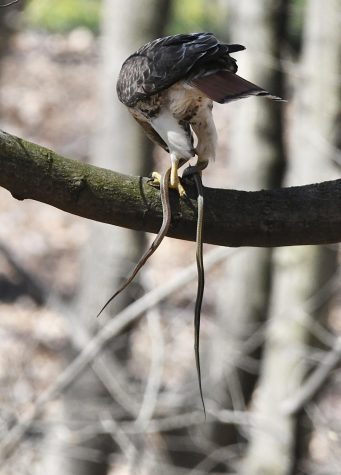
Red-eared Slider (Trachemys scripta) — Red-eared Sliders are a large species of turtle found across the United States, sporting a brownish-green shell with a pale, yellow underside and red stripes behind each ear. Never found too far from freshwater, Red-eared Sliders are the most invasive species of turtle across the US and, due to their imposing size, have outcompeted most native turtles from habitats. Like most aquatic reptiles, Red-eared Sliders hibernate under frozen water bodies from October March, only resurfacing once temperatures are conducive for basking on rocks. Due to its need for moderately-sized freshwater sources, this species is found in large numbers in a few locations in Hastings. Sugar Pond in Hillside Woods is an extremely reliable location, as is the Saw Mill River near the end of Farragut Avenue.

Insects
Mourning Cloak (Nymphalis antiopa) — Mourning Cloaks are medium-sized species of butterfly that are mostly dark with pale yellow fringing on their wings. When their wings are down, their wing tops show rufous coloring and a row of blue spots near the edge. One of our earliest arriving butterflies, Mourning Cloaks are often seen on the first warm days of spring near open fields with flowers, but they can also be found in dense forest. Interestingly, Mourning Cloaks are known for their longevity and they live for up to one year, an extremely long lifespan for a butterfly. Any local garden in Hastings can attract this species, but other good spots include Zinsser Park, Hillside Woods (especially the meadow by PADJ), and the Old Croton Aqueduct.
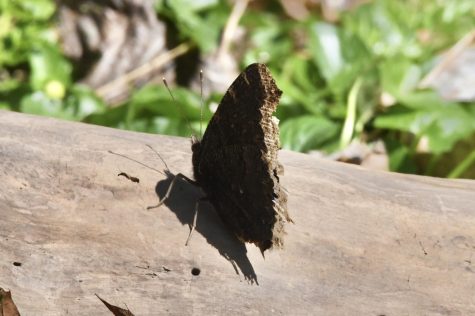
Black Swallowtail (Papilio polyxenes) — A magnificent and extremely large species of butterfly, the Black Swallowtail is all black with the bottom portion of their wings showing a shimmering blue section and a line of yellow crescents edging along the black. Often first showing in the later stage of spring — around mid-to-late April — Black Swallowtails have an average lifespan of under two weeks, which is fairly common in the butterfly world. To see this species in Hastings, backyards and gardens with native plants are often great spots to start, but Hillside Woods’ meadow or Zinsser Park are also fairly reliable locations.
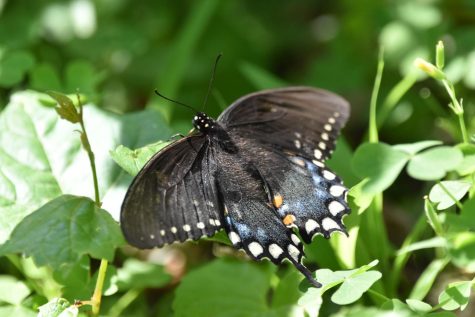


















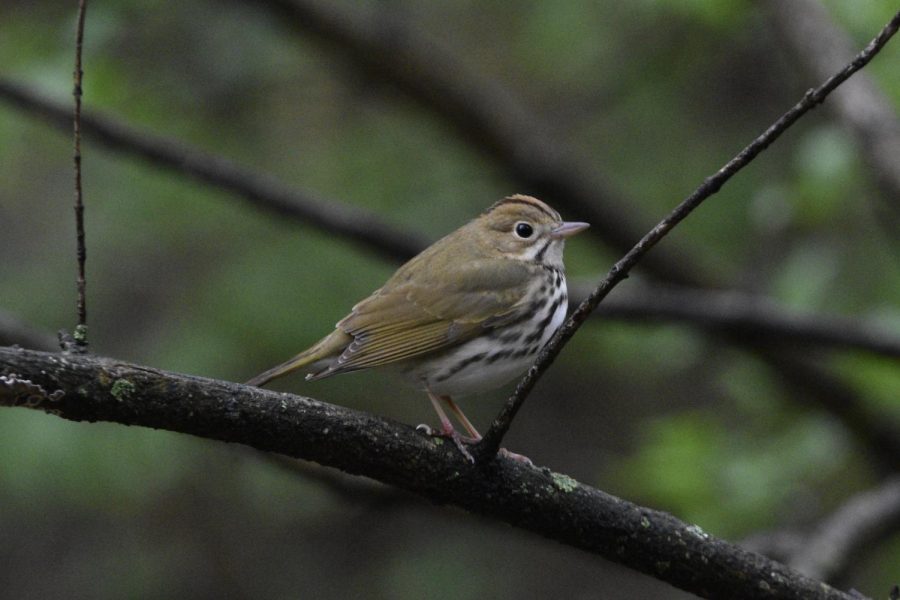
Maria Cocucci • Apr 29, 2022 at 8:54 am
Thanks, Julien – this was very interesting!
Arianna Grassia • Apr 29, 2022 at 8:49 am
Fantastic photographs! I especially loved the Osprey, a sure sign that spring has arrived.